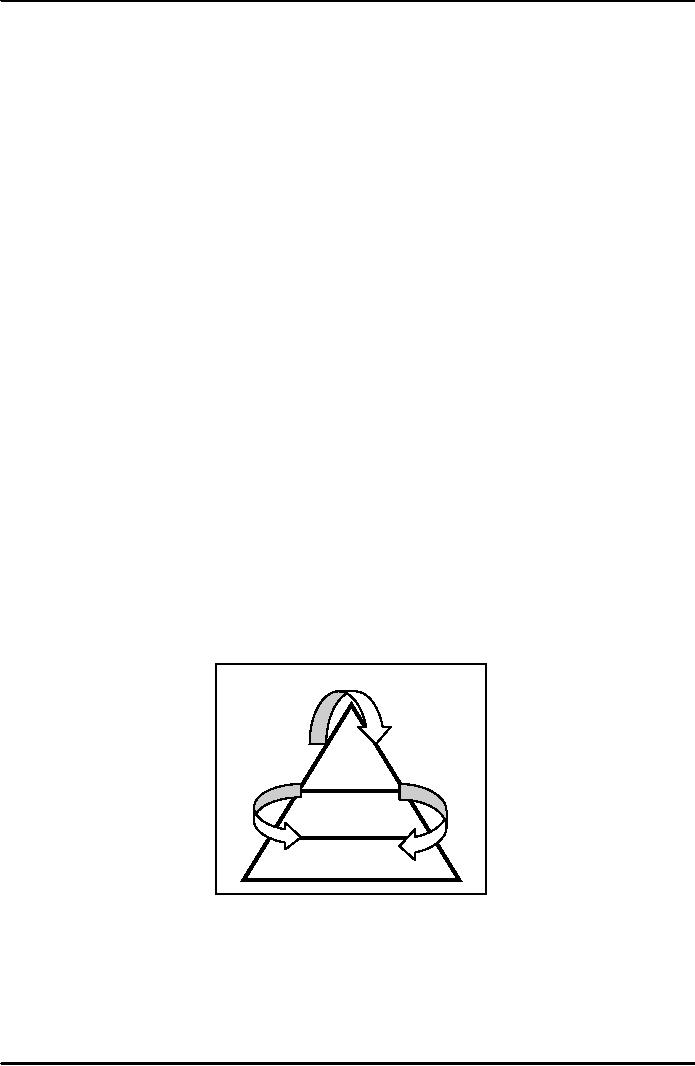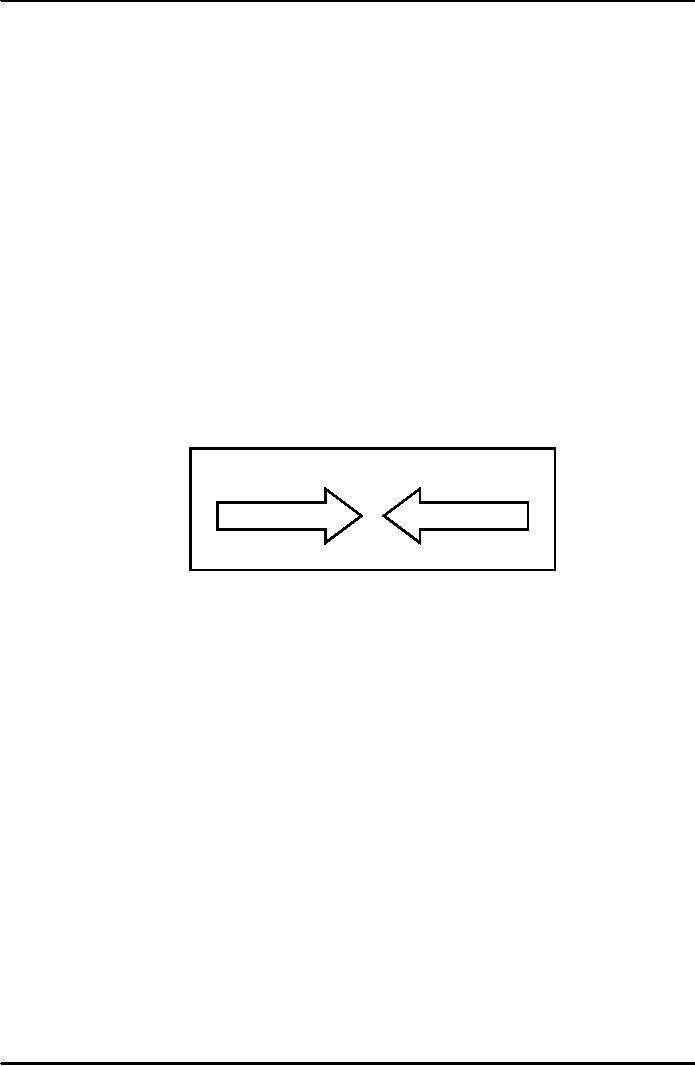 |

Introduction
To Public
AdministrationMGT111
VU
LESSON
06
POWER
AND POLITICS
At the
end of the lecture the students
will be able to understand the
following:-
1.
concept of power and
politics
2.
types of power and
conflict
3.
the importance of power in organization
The
main contributors of power and
politics school are:-
Harold
Laswell
Robert
Dhal
Antony
Jay (reintroduced Machiavelli's concept of
power)
This
school attempts to understand the
concept of power in organization. It defines power
as
personal
characteristics by which one
person can influence or dominate another
person. In organizations,
power
is the ability of one person or
department, to influence other people or
departments, in order to
bring
about the desired results.
Without power, organizations
will not be able to achieve
their goals, because
managers
exert influence to force people to do things that they
want. Another element in organization
is
politics.
Politics
is about controlling resources (material,
human, financial, information etc.). It
is also about
distribution
of resources. Who gets what,
how, when and where
(Harold Laswell 1936). Politics is
often
understood
as undesirable, because it is perceived
as "maneuvering" and manipulation" by
people.
Power
is synonymously defined with
authority. Authority comes
with the job that one is
holding,
and
power and authority are
perceived as one, although power
subsumes authority. "Power
and Politics
School"
views authority as only one
of the available sources of organizational
power.
It
may be mentioned that power is aimed at
in all directions in the organizations,
i.e. the top
managements
power would be felt from top
to bottom sideway as well. It can be
understood as the
presence
of an individual being felt.
Figure
Top
Middle
Bottom
There
are various types of power
that managers use in the
organization.
These
are:
Legitimate
Power
Reward/Punish
Power
Expert
Power
Referent
Power
22

Introduction
To Public
AdministrationMGT111
VU
Legitimate
Power
It
is the authority given by the organization to the
formal management position a
manager holds.
For
example: Power of DCO,
Nazim, and Policeperson.
These personnel have power
because they hold
certain
position.
Reward
/ Punish Power
The
power which stems from the
ability to bestow rewards
which include benefits like
food
allowance,
overtime cash allowance and
other fringe benefits. Example:
Adults can reward or
punish
children;
managers give cash awards to
their sub-ordinates for good
performance.
Expert
Power
It
is the power possessed by an individual
based on experience, or some
skills and ability.
Example:
computer
expert, specialist doctor
Referent
Power
Organizations
are always finding ways of
using the effective and suitable
way of utilizing the
experience
and knowledge of reputable managers as
far as employee referrals
are concerned.
Conflict
Conflict
is a natural outcome of the close
interaction of people. It is defined as
difference,
disagreement
and dissension. When there
is disagreement and dissension people
will have a view point
and
suggestion
that is different. In order to
have their views prevail
people will try to find
means by which give
and
take will occur.
Therefore,
individuals and groups will
use power and political
activity to handle their
differences
and
manage conflict.
Conflict-
as Positive and Negative
Conflict
can have positive or
negative affect on the organization. The
positive affect is when
manager
agree to some new view
points of the disagreeing
group/individual.
Conflict
can be a positive force because it
challenges the status quo, encourages
new ideas and
approaches,
and leads to change.
However,
too much conflict can be
harmful to any organization. Because
too much conflict
can
lead
to dead lock and things may
not move. Some degree of
conflict always occurs in
all human
relationships.
Reactions
of Managers
Most
managers have a negative
view toward politics and
believe that politics will
more often hurt
than
help an organization in achieving its
goals. Politics is also seen as a
negative element. But some
kind of
politics
is always there in organization and if
that is understood managers can
use it in a positive
way.
Political
behaviour is common to practically all
public or private organizations,
and should be used
positively
by involving people in decision
making.
Most
managers think political
behaviour occurs more often
at upper rather than lower levels
in
organization.
But political behaviour is common to
people in organization, therefore, it occurs at all
levels,
but
it is more at the top.
23

Introduction
To Public
AdministrationMGT111
VU
Political
behaviour arises in certain
decision domain, such as structural
change, but is absent
from
other
decisions, such as handling
employee grievances.
Organizational
decision-making and problem-solving, is
also a political process.
Organizational
actors
seek to satisfy not only
organizational interests, but also
their own wants and
needs; driven by
self-
interest.
Three
Dimensional Typology
For
the purposes of understanding organizational political
behaviour, Farrell and Peterson
(1982)
proposed
a three-dimensional typology. The
dimensions are:
1.
Where the political activity
takes place -- inside or
outside the organization
2.
The direction of the attempted influence -- vertically
or laterally in the organization
3.
The legitimacy of the political
action:
The
purpose of three dimensional typology is
to identify if the political activity is
within the
organization
or outside and where is the influence of
politics and are the actions
legitimate. This helps in
controlling
and managing political
behaviour in organization.
Concepts
Power:
ability
to influence people using any type of
power
Politics:
who
gets what, how and
when using the power that
one
possesses.
Organizational
behaviours:
the
interaction and behaviour of
employees in the organization
24
Table of Contents:
- INTRODUCTION:Institutions of State, Individualism
- EVOLUTION OF PUBLIC ADMINISTRATION:Classical School, The Shovelling Experiment
- CLASSICAL SCHOOL OF THOUGHTS – I:Theory of Bureaucracy, Human Relation Approach
- CLASSICAL SCHOOL OF THOUGHTS – II:Contributors of This Approach
- HUMAN RELATIONS SCHOOLS:Behavioural School, System Schools
- POWER AND POLITICS:Conflict- as Positive and Negative, Reactions of Managers, Three Dimensional Typology
- HISTORY OF PUBLIC ADMINISTRATION – I:Moghul Period, British Period
- HISTORY OF PUBLIC ADMINISTRATION – II
- CIVIL SERVICE:What are the Functions Performed by the Government?
- CIVIL SERVICE REFORMS:Implementation of the Reforms, Categories of the Civil Service
- 1973 CONSTITUTION OF PAKISTAN:The Republic of Pakistan, Definition of the State
- STRUCTURE OF GOVERNMENT:Rules of Business, Conclusion
- PUBLIC AND PRIVATE ADMINISTRATION:The Public Interest, Ambiguity, Less Efficient
- ORGANIZATION:Formal Organizations, Departmentalization
- DEPARTMENTALIZATION:Departmentalization by Enterprise Function, Departments by Product
- POWER AND AUTHORITY:Nature of Relationship, Delegation of Functional Authority
- DELEGATION OF AUTHORITY:The Art of Delegation, Coordination
- PLANNING – I:Four Major Aspects of Planning, Types of Plans
- PLANNING – II:Planning ProcessThree principles of plans
- PLANNING COMMISSION AND PLANNING DEVELOPMENT:Functions, Approval Authority
- DECISION MAKING:Theories on Decision Making, Steps in Rational Decision Making
- HUMAN RESOURCE MANAGEMENT (HRM):Importance of Human Resource, Recruitment
- SELECTION PROCESS AND TRAINING:Levels at Which Selection takes Place, Training and Development
- PERFORMANCE APPRAISAL:Formal Appraisals, Informal Appraisals
- SELECTION AND TRAINING AND PUBLIC ORGANIZATIONS:Performance Evaluation,
- PUBLIC FINANCE:Background, Components of Public Finance, Dissimilarities
- BUDGET:Components of Public Income, Use of Taxes, Types of Taxation
- PUBLIC BUDGET:Incremental Budget, Annual Budget Statement, Budget Preparation
- NATIONAL FINANCE COMMISSION:Fiscal Federalism Defined, Multiple Criteria
- ADMINISTRATIVE CONTROL:Types of Accountability, Internal Control, External Control
- AUDIT:Economy, Effectiveness, Objectives of Performance Audit, Concepts
- MOTIVATION:Assumptions about Motivation, Early ViewsThree Needs
- MOTIVATION AND LEADERSHIP:Reinforcement Theory, Leadership, The Trait Approach
- LEADERSHIP:Contingency Approaches, Personal Characteristics of Employees
- TEAM – I:Formal & Informal teams, Functions of Informal Groups, Characteristics of Teams
- TEAM – II:Team Cohesiveness, Four ways to Cohesiveness, Communication
- COMMUNICATION – I:Types of Communication, How to Improve Communication
- COMMUNICATION – II:Factors in Organizational Communication, Negotiating To Manage Conflicts
- DISTRICT ADMINISTRATION:The British Period, After Independence, The Issues
- DEVOLUTION PLAN – I:Country Information, Tiers or Level of Government
- DEVOLUTION PLAN – II:Aim of Devolution Plan, Administrative Reforms, Separation of powers
- POLITICAL REFORMS:District, Tehsil, Functions of Union Council, Fiscal Reforms
- NEW PUBLIC MANAGEMENT (NPM):Strategy, Beginning of Management Approach
- MANAGERIAL PROGRAMME AGENDA – I
- MANAGERIAL PROGRAMME AGENDA – II:Theoretical Bases of Management, Critique on Management